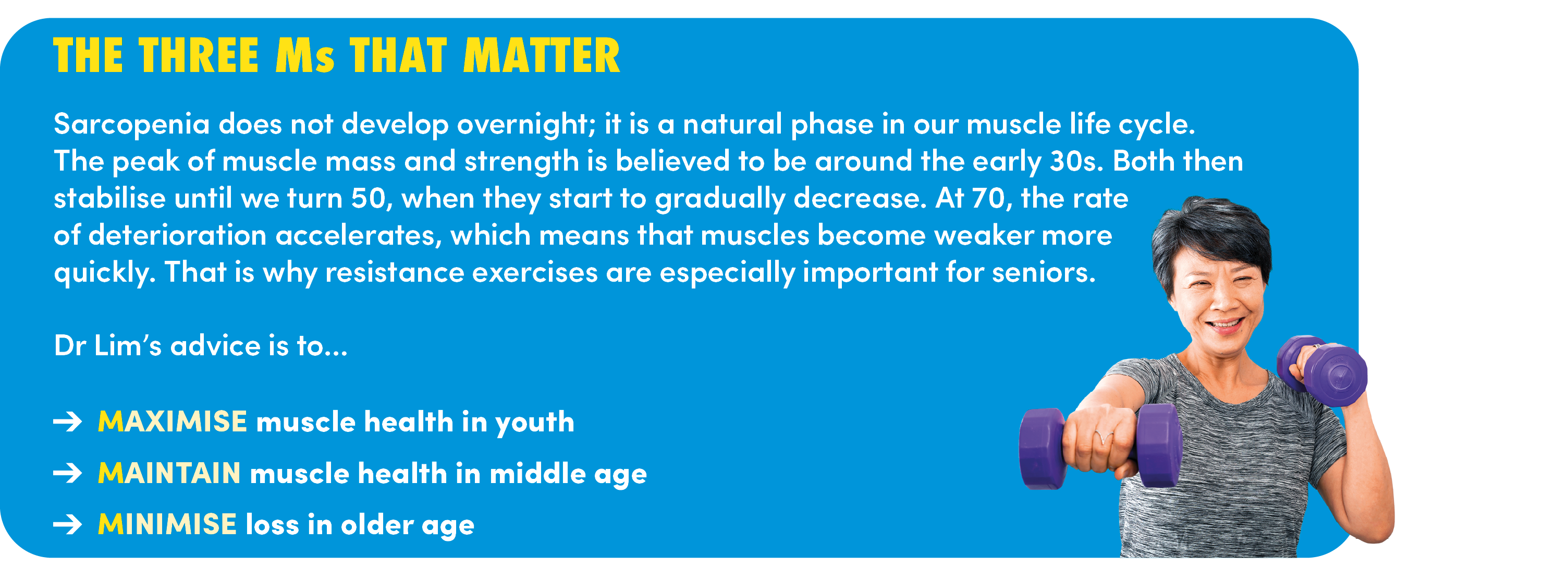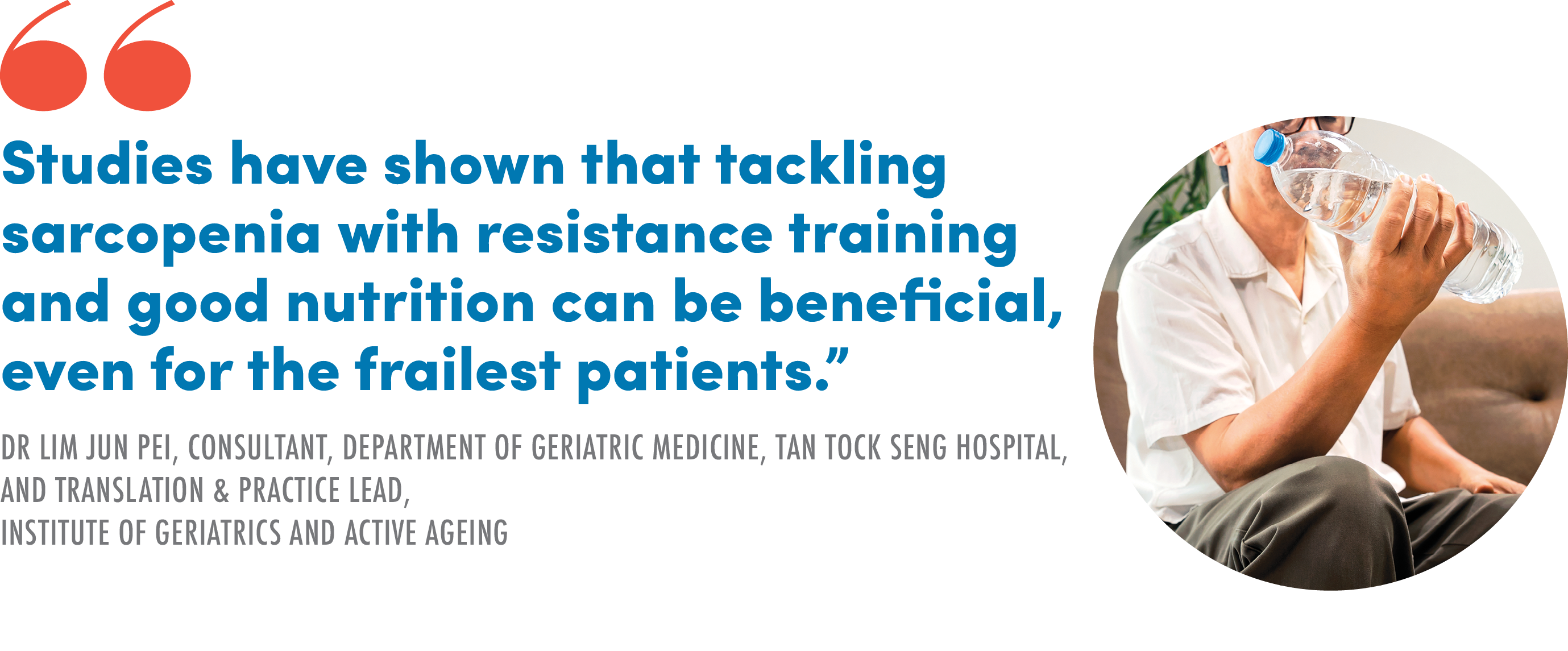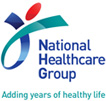Stronger For Longer
Prioritising muscle health can empower your golden years, keeping you active and resilient.
Muscle strength is central to all our daily activities, whether walking up a flight of stairs or carrying bags of groceries. It is crucial that we safeguard this strength, particularly in the senior years because that is when we begin to lose it.
This loss of muscle strength is known as sarcopenia. Although an inevitable part of ageing, sarcopenia can be exacerbated by lifestyle factors such as a sedentary lifestyle, smoking, and poor nutrition, explains Dr Lim Jun Pei, a consultant at Tan Tock Seng Hospital (TTSH)’s Department of Geriatric Medicine.
“Medical conditions that affect appetite and activity may also have an impact,” Dr Lim adds.
Watch Out For Signs
Early indicators of sarcopenia include difficulty in climbing stairs, feeling like one’s walking speed has slowed down, getting more tired, or a sudden weight loss. “Older adults with sarcopenia will experience unsteadiness in walking and have a high risk of falling. They may find going out of their homes very challenging,” says Dr Lim. In severe cases, these seniors might require assistance to perform daily tasks like showering and dressing.
Dr Lim, who is also Translation and Practice Lead at TTSH’s Institute of Geriatrics and Active Ageing (IGA), has seen how the condition cripples an elderly’s well-being. “A patient of mine had become increasingly sedentary because he feared catching COVID-19.
“He then started to feel easily tired, was not able to travel long distances, and even had a fall when he was using an overhead bridge to get to a nearby hawker centre,” she says.
Dr Lim had the senior perform the repeated chair stand test and, indeed, the elderly man had developed sarcopenia. The test involves rising five times from a seated position with hands folded across the chest. The time taken for this task is recorded. “Patients with sarcopenia may find it difficult to do this exercise without using their upper limbs for support, or may take more than 12 seconds to complete the task,” explains Dr Lim.
Doctors may also do more tests on anyone who is diagnosed with sarcopenia, so as to check for other medical conditions. “These may be underlying causes of sarcopenia, and these include hyperthyroidism, undiagnosed diabetes, or mental health conditions that lead to poor appetite and low physical activity,” says Dr Lim.
As Singapore ages, data like this become commonplace: a 10-year study by IGA found that the prevalence of sarcopenia in Singapore ranged from 13 to 25 per cent, compared with 5.5 to 25.7 per cent for Asia as a whole. This information is especially important, as the disease, if left unchecked, could challenge the country’s healthcare system, given its fast-ageing population — one in four Singaporeans is expected to be over the age of 65 by 2030.

Adverse But Avoidable
Sarcopenia can be slowed down and potentially reversed. Taking active steps to fight the condition will prevent many of its negative impacts, such as reduced balance and mobility, and the overall ability to perform daily tasks.
Resistance training remains an important pillar in fending off sarcopenia. Such training refers to exercises where you hold or work muscles against a weight, which can be a resistance machine, free weights, resistance bands, or even one’s own body weight. Dr Lim says that seniors should adopt a progressive approach to resistance exercises, by starting slowly and gradually increasing the muscle load. They should also incorporate strength training twice a week and do exercises that work both the lower and upper limbs.

Proper nutrition is also key. Older people should consume the right amount of calories for their weight and age. Also crucial is protein intake. The Health Promotion Board (HPB) recommends that adults above 50 years old consume 1.2g of protein per kg of their body weight every day. For example, someone who weighs 50kg should try to get 60g of protein every day — roughly two palm-sized portions of lean animal protein like chicken or fish.
Essentials such as fruits, vegetables, and wholegrains provide a range of nutrients with antioxidant properties, as well as essential fatty acids and Vitamin D, which are important for muscle function.
With regular exercise and proper nutrition, those with sarcopenia can often see swift improvements in their overall well-being. “They will feel more energised and less fatigued. Their walking speed may also increase and they may have less difficulty climbing stairs,” says Dr Lim. “As patients build muscle strength and mass, they gain the ability to perform tasks independently, which previously might have required upper limb assistance.” They should also be able to complete these tasks in a shorter time.

Tackling sarcopenia is made easier thanks to national initiatives like Age Well SG, which encourages seniors to be more mindful of their diet and activity. However, like so much related to our health, a lot lies in our own hands. “Studies have shown that tackling sarcopenia with resistance training and good nutrition can be beneficial, even for the frailest patients. They were useful in improving muscle mass and daily functions, like hand-grip strength and gait speed,” says Dr Lim. “But these improvements disappeared when the interventions were discontinued, which goes to show the importance of keeping to good habits.”LW
Read the e-Book of the magazine here
Read the PDF of the magazine here

